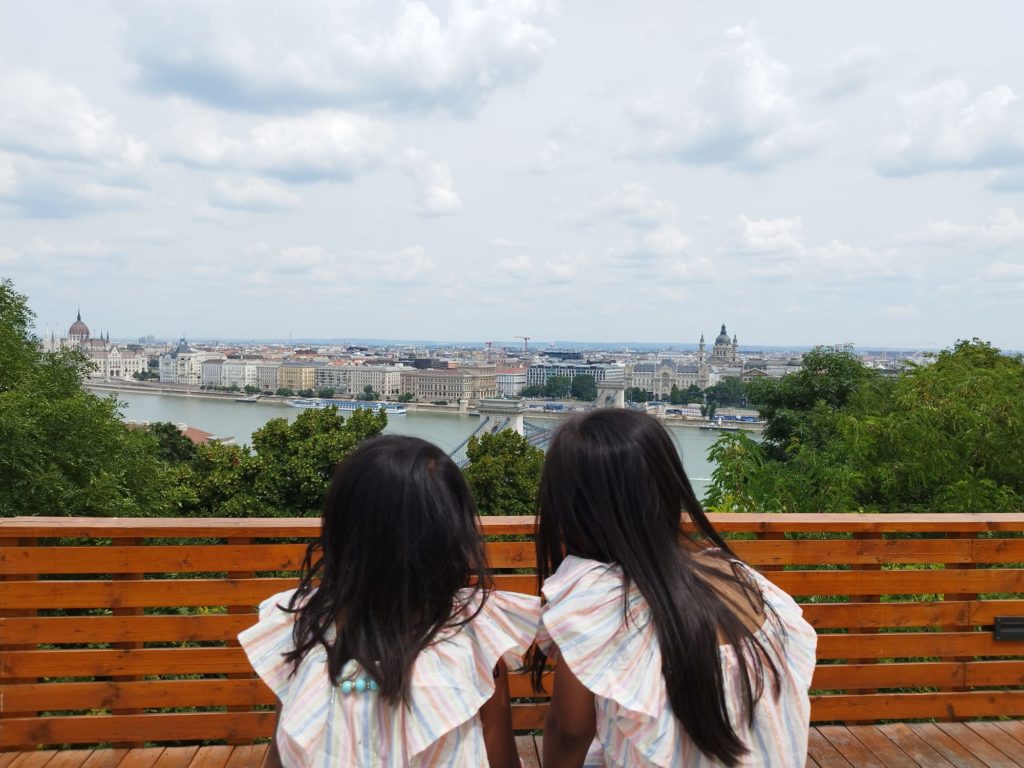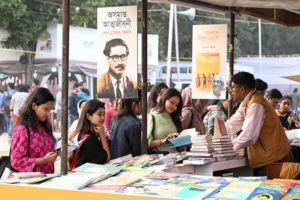Millennial Amma: How to Explain a Global Crisis As a Parent

By Rumki Chowdhury
As my children, my husband, their grandparents and I sit around the dinner table, we discuss our school day, our work day or we play a fun game like “name a fruit” until someone runs out of fruit names, thus losing. However, when it comes to a global crisis, which becomes increasingly and rapidly apparent via social media, news outlets and school discussions, those frivolous moments turn into forums: “What is a war?” My toddler asks. “How is it going to affect us?” My 9-year-old asks. “Well, I think….” My 11-year-old shares her perspective on things.
When each of my children were born, I was overjoyed to have them in my life, but I was afraid for them; I feared that they had come into a world that would be utterly unjust to them as they had been to me, that humanity would not prevail by the time they reached adulthood as desensitization is on the rise.
We were born into a world that had experienced and still experiences colonialism, occupation and war. Consequently, to fear for our children seems like a conspicuous aspect of nurture. When a global crisis hits, we end up having to answer difficult questions posed by our children, but how do we do this?
Here are three tips on how to explain a global crisis to a child, bearing in mind that each situation is different as is the outcome, and that this is based on my personal experience (s) as a Bengali American millennial amma:
1. Our levels of emotions may vary, whether it be outrage, melancholy or horror, but we need to maintain them for the sake of our children, whose eyelids have yet to be opened enough to understand what those emotions have resulted from. Therefore, it is important for us to remain calm and ask questions, fully conscious of the fact that we will be asked questions in return: “What have you heard, my child?” “How does that make you feel, my child?” “What do you understand, my child?” “What confuses you the most, my child?” Remember, sometimes it’s not about saying the right thing; rather, it’s about saying what they need to hear. Be mindful of your child’s emotions and placate them with soothing words.
2. Try to explain things in a way that your child will understand, that is to say, imagining a bedtime story with fictitious characters or relating the events of the world to something they are familiar with. For example: “You know how you have dolls of every color of skin? Aren’t they just so beautiful?” or “What makes your friends special?” Both of these examples emphasize how people’s personalities matter more than how they look on the outside; that prejudice of every kind is wrong. Simple words can have a tremendous impact on a child.
3. Children respond to visual aid. They are well acquainted, since birth, with vibrant illustrations and images. The educational system has colorful posters hanging up on classroom walls, powerpoint/google presentations that highlight important facts and elements through short videos, display of graphs and diagrams, storyboard, etc. Sometimes, even pointing out specific locations on a globe or a map demonstrates the geography of a global crisis.
Rumki Chowdhury is an award-winning published author and editor. Her latest novel, Secrets in the Wind has won accolades in the New York Big Book Awards, New York Book Festival and London Book Festival. She speaks Bengali and Swedish fluently! She has a Masters in English Literature from the UK and years of experience in the publishing and media worlds. You can follow her work on instagram, Facebook @rumkitheauthor and www.rumki.com
Read More
The Legacy of Boi Mela
Every year in February, the month-long national book fair welcomes...
Read MoreMillennial Amma: How to Explain a Global Crisis As a Parent
Rumki Chowdhury shares tips for how to talk to children...
Read MoreBegum Rokeya’s Millennials
A tribute to a pioneering Bengali feminist writer, educator and...
Read More



